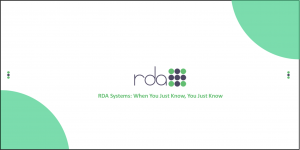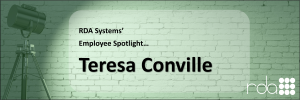In today’s fast-paced environment, to keep your staff updated with the latest technology is crucial for maximizing productivity and ensuring that students and constituents receive the best possible services. Whether in educational institutions or local governments, the integration of new technologies can enhance performance and streamline processes. Here are six effective strategies to keep your staff up to speed with technology, drawing on examples from both sectors to illustrate their success and impact.
1. Build a Tech Support Team
Creating a dedicated tech support team can significantly ease the transition to new technologies. As Edutopia points out, “Integrating technology can be very stressful for educators that aren’t familiar with it. Having a support team that’s flexible and available to struggling teachers is crucial for any tech rollout.”
Aldine Independent School District has excelled in this endeavor, creating a team of tech-savvy teachers and IT staff who provide ongoing support to their colleagues. This “Technology A Team” helps troubleshoot issues and offers one-on-one assistance, ensuring that teachers can effectively integrate new tools into their classrooms.
2. Offer Targeted Professional Development
“Educators need to know how to use that technology so they can teach their students,” as Learning A-Z straightforwardly explains. Effective professional development (PD) is key to keeping staff up to date so they can later pass that knowledge on to students. Professional development sessions should be tailored to address the specific needs of staff, focusing on the tools and technologies they are expected to use. In practice, this means including hands-on training sessions that help teachers integrate technology into their lesson plans.
As an example from the world of local governments: In San Francisco, the TechSF initiative provides city employees with personalized workshops on software applications, data management systems, and cybersecurity, ensuring they are well-equipped to handle their tasks. These workshops have been instrumental in helping employees adapt to new digital tools, resulting in increased efficiency and better service delivery.
3. Foster a Collaborative Learning Environment
Encouraging collaboration among staff can lead to better technology integration. Oak Hills School District, for instance, has implemented Professional Learning Communities (PLCs) where teachers share best practices and learn from each other’s experiences with new technologies. This collaborative approach creates a supportive culture that values continuous learning. As Edutopia notes, “Creating a homegrown professional learning community (PLC) that focuses on monitoring tech integration throughout the school can be powerful and insightful while supporting those that need additional help.”
4. Provide Ongoing Technical Support
Ongoing technical support is crucial for minimizing disruptions and ensuring smooth operations. Miami-Dade County Public Schools has established a dedicated IT help desk that provides 24/7 support to teachers and staff, helping quickly resolve technical issues. As EdTech Magazine highlights, “One of the biggest difficulties is when new technology is put in classrooms without any training. This can be especially difficult for less tech-savvy teachers who may not learn the technology as intuitively.”
In a similar vein, Chicago’s IT department offers a centralized help desk, providing immediate assistance and resources for troubleshooting across all departments. This system ensures that employees have a reliable resource to turn to when they encounter technical issues, which helps maintain productivity and reduces downtime. Regular follow-ups and remote support options further enhance the support structure, making it easier for staff to navigate new technologies and tools
5. Make Technology Relevant and Accessible
Ensuring that technology is relevant and accessible is key to successful integration. In the Boston Public Schools system, technology is aligned with educational goals. For instance, digital tools enhance literacy programs, making learning more engaging and effective for students. By incorporating interactive e-books, online reading platforms, and literacy apps, Boston Public Schools have seen improvements in student engagement and reading proficiency. Teachers use data from these digital tools to tailor instruction to individual student needs, personalizing the learning experience and making it more impactful.
The City of Austin, Texas, has implemented several technology initiatives to improve public services and make them more accessible to residents. The city’s IT department collaborates with various agencies to develop and implement these technologies, including online permit applications and digital payment systems. These initiatives streamline processes that were traditionally cumbersome and time-consuming, thereby increasing efficiency and accessibility for residents. For example, the Austin Build + Connect portal allows residents to apply for building permits, schedule inspections, and track the progress of their applications online, reducing the need for in-person visits
6. Encourage a Growth Mindset
Promoting a growth mindset is essential for continuous improvement. At Los Angeles Unified School District, teachers are encouraged to experiment with new technologies and reflect on their experiences. This approach helps create a culture of innovation and resilience. As Resilient Educator points out, “In this digital age, it’s important to stay relevant without requiring you to research every app and trend out there.”
Similarly, Denver’s “Innovation Labs” allow city employees to explore new technologies and develop creative solutions to urban challenges, improving technological proficiency and boosting employee morale. These labs provide a collaborative space for brainstorming and testing new ideas, which has led to innovative solutions in areas like transportation, public safety, and community services. The success of these labs has also fostered a sense of ownership and pride among employees, further enhancing their engagement and commitment to continuous learning and improvement.
Embracing the Future
By implementing these strategies, educational institutions and local governments can help their staff stay current with technology and enhance their ability to deliver high-quality services. Regular support, targeted training, and a collaborative learning environment are crucial components in building a tech-savvy workforce.
If you’re ready to transform your organization with the latest technology solutions, contact RDA Systems today to learn more about how we can help you achieve your goals.





